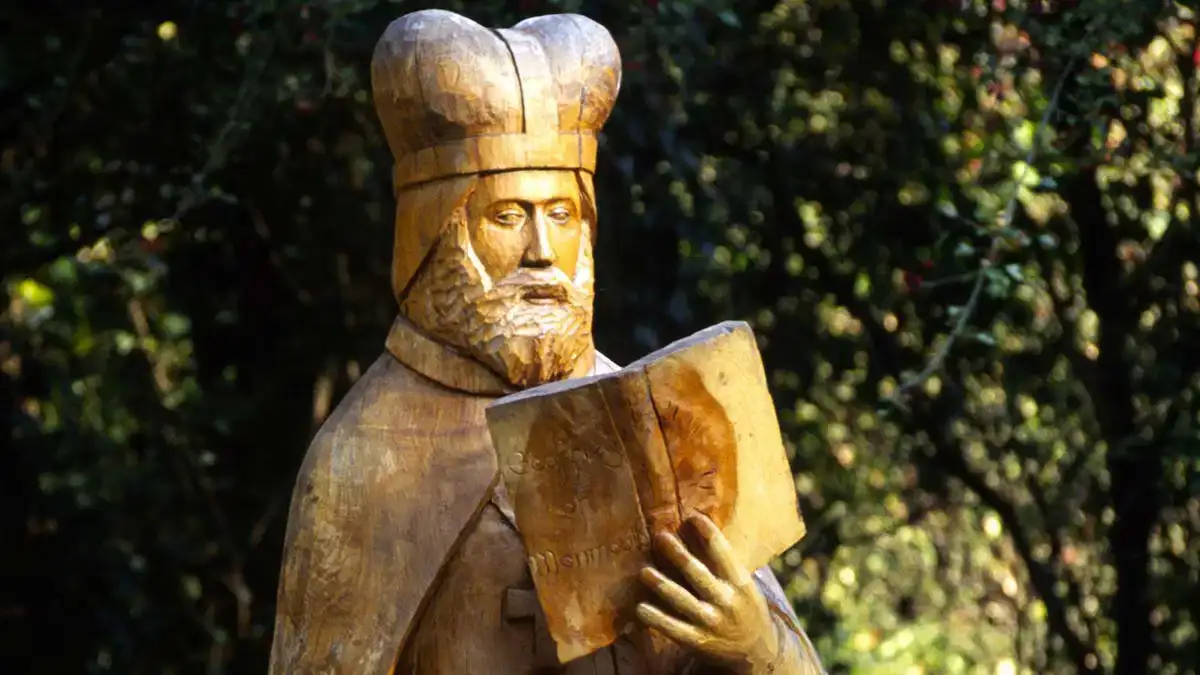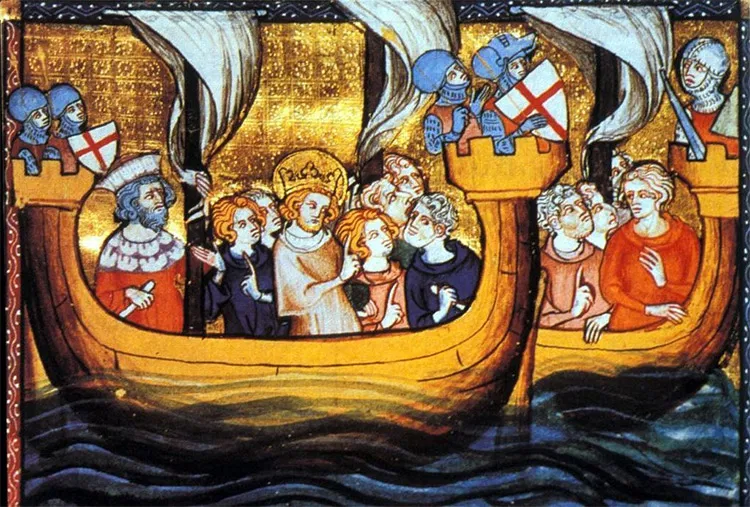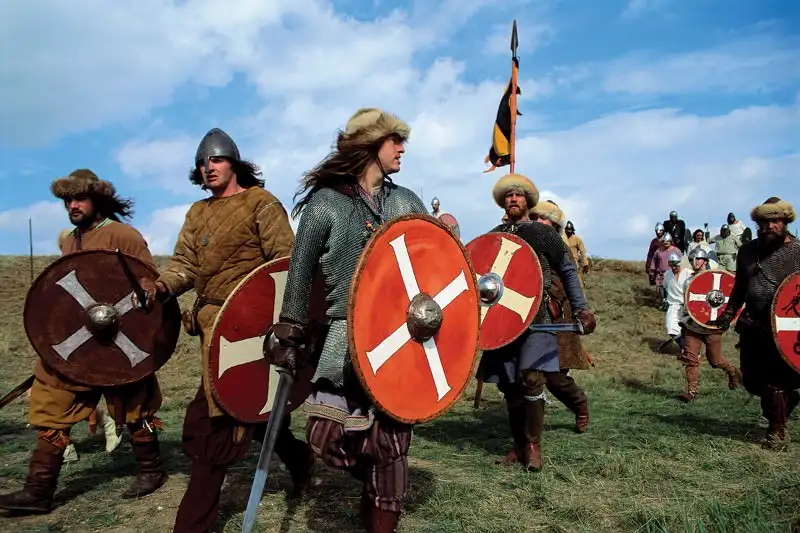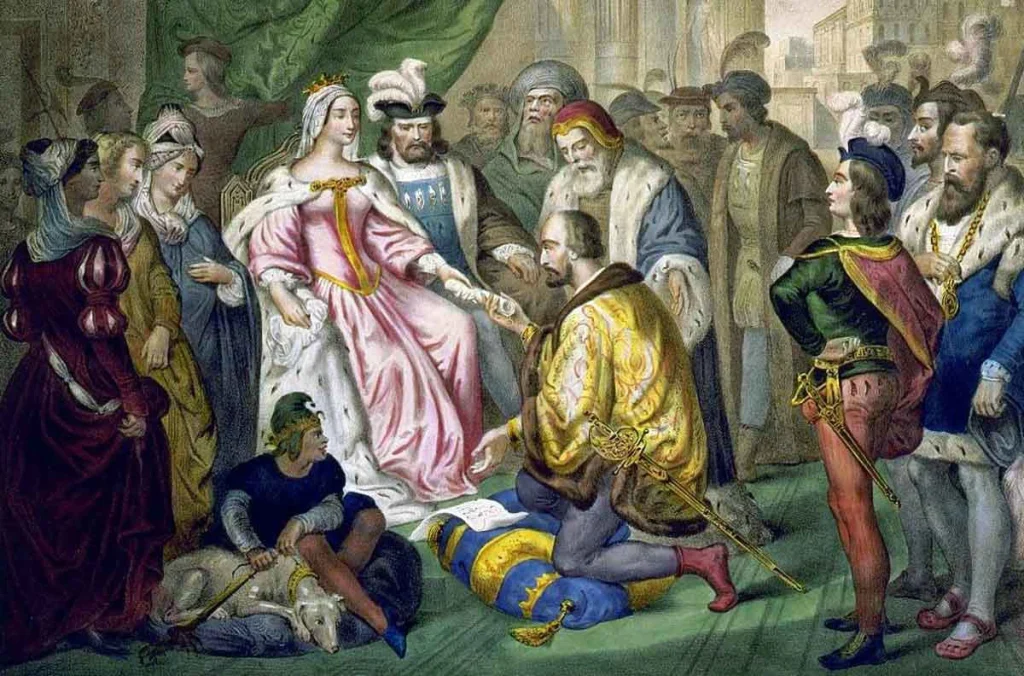# Did King Arthur Really Invade Europe?
The legend of King Arthur is one of the most enduring tales in British folklore. Most people know him as the noble king who fought the Saxons to defend Britain. But there’s another, more ambitious side to his story—one where he marches into Europe, battles the Romans, and even threatens Rome itself.
At first glance, this seems like pure fantasy. After all, the real Britain of the 6th century was a fractured land, struggling against invaders, not launching grand continental campaigns. So where did this idea come from? Was it just medieval storytelling, or could there be a kernel of truth buried beneath the myth?
The Legend of Arthur’s European Conquest
The most famous version of Arthur’s European campaign comes from Geoffrey of Monmouth’s Historia Regum Britanniae (c. 1137). According to Geoffrey, after securing peace in Britain, Arthur sets his sights on conquest abroad. He first invades Scandinavia, then turns his attention to Gaul (modern-day France), which is still under Roman rule.
Arthur defeats the Roman governor of Gaul, Frollo, in single combat and takes control of the region. Later, when Rome demands tribute, Arthur raises a massive army and marches on Rome itself. In a brutal battle at Siesia, Arthur emerges victorious—though many of his men perish.
It’s a thrilling tale, but is there any historical basis for it?
Did Geoffrey of Monmouth Make It All Up?
Geoffrey’s Historia is a mix of legend, history, and outright invention. Scholars agree that much of his Arthurian material comes from Welsh and Breton traditions, but he likely embellished them.
However, there’s evidence that the idea of Arthur fighting in Europe wasn’t entirely Geoffrey’s creation. A Welsh tale called Culhwch and Olwen (dating to around 1100) also mentions Arthur’s conquests—not just in Gaul, but as far as Greece, Africa, and even “Greater and Lesser India.”
This suggests that Geoffrey wasn’t inventing from scratch. The idea of Arthur as a conqueror in Europe was already circulating in Welsh tradition.
A Real-Life Inspiration: Magnus Maximus
If Arthur didn’t actually invade Europe, who did? The answer might lie with a real historical figure: Magnus Maximus, a Roman general who declared himself emperor in 383 AD.
Maximus was a usurper who rose from Britain, conquered Gaul, and even challenged Rome. His story bears striking similarities to Arthur’s legendary campaign:
– Conquest of Gaul: Like Arthur, Maximus fought the Romans in Gaul. The Western Emperor Gratian’s army deserted him, and Maximus’ cavalry commander, Andragathius, hunted Gratian down and killed him—just as Arthur supposedly killed Frollo.
– Conflict with Rome: Years later, Maximus marched on Italy. His forces clashed with the Eastern Roman army at Siscia (similar to Arthur’s battle at “Siesia”) and were defeated.
Even more intriguing, Welsh tradition preserves two nearly identical stories—one about Arthur’s sister Elen, who went to Europe with him and never returned, and another about Maximus’ wife Elen, who did the same.
Could these two legends have merged over time?
Was Andragathius the Real “Arthur”?
If Maximus’ campaign inspired Arthur’s European conquest, then who was the “Arthur” of the story? Surprisingly, it might not have been Maximus himself—but his right-hand man, Andragathius.
– Andragathius was the one who personally killed Gratian (just as Arthur killed Frollo).
– He led the army at Siscia (just as Arthur led his men at Siesia).
– Unlike Maximus, who became emperor, Andragathius remained a military leader—fitting Arthur’s role as a warrior-king rather than a ruler of Rome.
This raises a fascinating possibility: Could Andragathius have been remembered in Welsh legend as Arthur?
Conclusion: A Misplaced Legend
The story of Arthur’s European campaign wasn’t pure fiction—it was likely a distorted memory of real events. The exploits of Magnus Maximus and Andragathius, passed down through generations, may have been repurposed into Arthurian legend.
In a way, Arthur did invade Europe—just not in the 6th century, and not as the king we know. The legend was a medieval reimagining of a much older, real-life conquest.
So next time you hear about Arthur’s battles in Gaul or his march on Rome, remember: behind every great myth, there’s often a grain of truth—just waiting to be uncovered.
—
Further Reading:
– [Geoffrey of Monmouth: The Man Who Gave Us King Arthur and Merlin](#)
– [Avalon: The Mysterious Island of Arthurian Legend](#)
– [Sir Lancelot: King Arthur’s Greatest Knight and Betrayer](#)
What do you think? Could Arthur’s European campaign have been inspired by real history? Let us know in the comments!











































